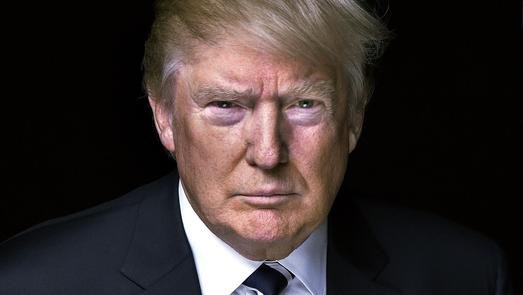This article is originally featured on the Open Democracy 5050 website
Trump offered white voters the illusion they could prosper. We have to offer all our people a way to move forward together and save the planet.
In the weeks leading up to Nov. 8, as the election loomed like a cloud about to burst, I was unmoored by a feeling of dread so strong I could barely sleep. The debates had been so awful, Trump’s threats to immigrants and Muslims so terrifying, his dismissal of climate change so incredible, his contempt for women so appalling, his glare so demented, his late night tweets so childish and unhinged. It simply was not possible that people would see this satyr as a “strong man” with some unique ability to fix the country’s problems.
But by the early hours of 11/9, Trump had won enough electoral college votes to be declared president, and Hillary had conceded. It has now become increasingly clear that she won the popular vote by a fairly large volume—absentee ballots are still being counted – but because of an archaic constitution set up to protect slave states, lost in the Electoral College.

In the eight months leading up to this dreadful denouement, indigenous people from all over the world had flocked to an encampment at Standing Rock, North Dakota, in an action initiated and largely led by women. Their purpose was to block a fracking pipeline scheduled to be built on their land—on a protected burial ground, in fact—without their consent. They have been met by the entire militarised might of the state of North Dakota, along with oil company mercenaries and police forces brought in from other states. Some young Native American organizers camped out in front of Hillary Clinton’s New York headquarters to get her to take a position against the Dakota Access Pipeline. Her only response was that “all of the parties involved—including the federal government, the pipeline company and contractors, the state of North Dakota, and the tribes—need to find a path forward that serves the broadest public interest.”
At least Hillary knows global warming is real, though she barely mentioned it in the debates, which had not a single question on the subject. Trump believes climate change is a Chinese hoax. He has vowed to abrogate the Paris climate agreement and appointed a coal industry shill as his energy czar. For this reason alone, not to mention all the others, this election is a tragedy for the earth and all the species we share it with.
This spring was such a hopeful time—what a joy to hear Bernie Sanders actually call the problems we face by their right names and use the words capitalism and socialism without fear! His campaign seemed to get stronger every day, though it was clear from the beginning that the Democratic Party was not open to new energies from the left; they wanted to do business as usual and had convinced themselves it would work, even though the country was clearly calling for change.
The feminists I know were divided between Hillary and Bernie. Though I too would like a woman president, I supported Bernie, and not only because I worried about her ethical tone deafness, Wall Street allegiances, and bellicosity—“we came, we saw, he died.” I don’t think electing women politicians can make up for the absence of a feminist movement that takes questions of class, race, war, and power thoroughly on board. We don’t have that movement yet and Hillary’s campaign did nothing to build it. Her speeches were all policy points, nothing to inspire the listener, just the usual American exceptionalist framing of the US as a unique power sent by God to save the world—a view she shares with Obama, Biden, and most politicians of both parties.
When Hillary got the nomination, I voted for her and urged everyone else to do so because the alternative was to put a jittery thug at the top of the most powerful military in the world, a man who is not only a clear sociopath but has been happy to act as front man for a nascent fascist front made up of the Klan, the Nazi Party, and the various mad armed groups who call themselves patriots. But inconceivably, he is now the President-elect.

Why did Trump get so many votes? Reams of analysis are already being written. There was his open mobilization of sexism, racism, and anti-immigrant nativism, his playing to people’s economic insecurity and blaming immigrants for the economic woes of the majority. There was the Democratic National Committee’s undermining of Bernie, whom some think could have beaten Trump. Hillary herself blames Comey’s partisan FBI interventions. The role of the media was appalling throughout; they normalized a fascist campaign and focused on Hillary’s emails as if they were the equivalent of Trump’s rape and multiple financial crimes.
It was also a new media environment, where people could get all their news and opinions from the internet and never look at a paper or TV. As Andrew Marantz explained in the New Yorker, the alt right had a system for making lies favorable to Trump go viral. Some of these fake news stories were traceable to Macedonian teenagers who set up popular pro-Trump sites so they could make money from Facebook.
The vote was also the product of years of systematic Republican gerrymandering and voter suppression, which may have cost Hillary key states. And the fact that people were so turned off by the candidates and the election process that a million fewer people voted in this election than in 2008. And many voters—in New York State, 6500 in Cuyahoga County alone— hated both candidates so much they left the top line of their ballot blank and just voted for the candidates down ticket.
But the most obvious explanation for Trump’s win is his skill as a con man. All evidence to the contrary, many people in the Rust Belt see him as a brilliant businessman who will fix the economy so they can once more get decent jobs. To improve their own prospects, they were willing to overlook his racism and sexism. As my daughter-in-law, a black feminist, puts it, “Most people are selfish. They may live in a big house while somebody a few streets over has no home, but they won’t give up a room.”
The election exposed all the contradictions within the US feminist movement. Not only was Hillary was the first woman presidential candidate nominated by a major party, her program was strong on things a lot of women need: equal pay, subsidized childcare, universal pre-K, parental leave, reproductive rights. Meanwhile Trump is an accused rapist whose campaign, as Katha Pollitt says, took place in a testosterone cloud, with advisors like Roger Ailes, a defendant in multiple sexual harassment cases; Newt Gingrich, a hypocrite and serial adulterer; and Rudy Giuliani, who used a TV interview to tell his wife he wanted a divorce. Trump supporters sported t-shirts with slogans like “Trump that bitch” and “She’s a cunt, vote for Trump.”

The thought that 53% of white women voters could support this man is enough to make a feminist despair. No wonder many feel totally betrayed, particularly women of color—only 4% of black women voted for the guy. My desktop is full of articles with titles like “Trump Win Boils Down to White Women“, “Elite White Feminism Gave Us Trump: It Needs to Die“, and “White Women Sold Out the Sisterhood and the World by Voting for Trump“.
But it never made sense to assume that women would see themselves in Hillary Clinton and thus vote for her. The idea that women will naturally want to vote for other women is an illusion, though one central to liberal feminism. The suffrage movement argued that giving women the vote would bring about an era of social justice and world peace because women were innately more caring than men. After the war, suffragists were dismayed to see that women usually voted with their families and communities.
Here lies one of the divides between liberal and left wing feminism. Liberal feminists focus on individual rights. To win these rights, they work through electoral and institutional politics. They assume women will be motivated to fight on their own behalf and will see no conflict between their interests as women and the interests of their class, community, or family.
Left wing feminists try to reconcile individual with collective rights, such as the rights of labor, racial, ethnic, and sexual minorities, and dissidents—the current buzzword for this approach is intersectionality. But meshing feminist politics with progressive organizing can be difficult because leftwing movements tend to be led by men who discount women’s independent thought and want to use their labor for purposes they consider more urgent than women’s liberation.
And there are ideological weaknesses on all sides. What with the reductionist Marxism of the hard left, the post-structuralism of the academic left, the flakiness of the anarchist left, and the attitude-policing of the cultural left, it can be hard to find anyone in the US who thinks strategically. To the extent a practical left wing feminist movement now exists, it is led by embattled and mobilized working class and minority women and queers like those in the National Nurses Union, Black Lives Matter, and the encampment at Standing Rock. And while liberal feminists saw Hillary’s candidacy as the fulfillment of their dream of equality, the nurses supported Bernie and the women of BLM and the native American movement did not take a position supporting anyone.
So far, election post mortems have focused on demographics: who voted and why they voted differently this time than last. The focus has been on assigning blame: Trump’s victory is the fault of white women, of the white portion of the working class, of third party voters in Pennsylvania. This approach is not productive. Rather than more blame, we need clearer political ideas and programs that will get to people where they live—metaphorically and in actual neighbourhoods.
We have a long period of resistance ahead. Liberals have demonstrated that they are not strong enough to fight fascism. Only a stronger left can do that. And the only way to build a stronger left is to present an alternative vision of the society we want, one that opposes both the right and the status quo, and is based on practical organizing to make people’s lives better. The ideas being worked out in Rojava, with their combination of ecology, feminism, self-defense and direct democracy, are a source we could draw on.
But we don’t have a lot of time—Trump’s administration will inevitably disappoint many who voted for him, who are likely to move farther right unless we can offer them something that goes beyond protest and reaches towards daily life. Until we actually begin to build “a new society within the shell of the old” there is no point in talking about Elizabeth Warren in 2020 or a third party or anything else that involves voting. We already know the limitations of electoral democracy. Only half the US population even bothers to vote and that half is evenly divided between right and left. Trump offered—for white people only—the illusion that they could prosper under his leadership. We have to be able to offer all our people a chance to work together, a believable path forward, and a vision that centers on saving the planet.








Article Discussion